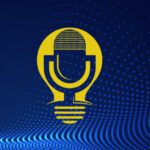How JTBD Reveals Latent Unarticulated Needs
Success at innovation requires that we remember “the drill is not the hole.” The drill is a solution designed to help customers make a hole. Other solutions could be a pick, punch, a laser, or some yet-to-be-invented tool. The customer need is to “make a hole.” People confuse customer needs with product solutions all the time which, not surprisingly, leads to new product and innovation failures.
This confusion also has led to the belief that customers have “latent unarticulated needs.” But if you google “examples of latent needs,” you’ll find the majority of examples are really products, not needs at all. The thinking goes that, because “nobody could have told you that they needed a microwave or an iPhone,” latent unarticulated needs exist. At first this may sound right but it is the result of confusing product solutions with real customer needs. While it is true that customers cannot tell us what product or service specifications they want any more than patients can tell their doctor what treatments they want, they can tell us what they want to accomplish, feel, and experience.
The customer “needs” that the microwave nailed are to “Minimize the time it takes to cook food” and “Minimize the time it takes to warm up food.” Notice also that there is no mention of any solution in either of those need statements. That’s because needs are separate and distinct from solutions. Keeping need statements free and clear of solution language ensures that you won’t be constrained by current solutions and increases your likelihood for breakthrough innovation. Also notice that these need statements are not difficult for anyone to articulate if you know what questions to ask, such as “What would the ideal oven do for you?”
Nobody could have told Steve Jobs that they wanted a iPhone either, but he and the Apple team understood that people could get all kinds of jobs done with apps that other inventors could create and Apple could sell through its store and provide on its phone. The customer needs that the iPhone nailed are all the tasks that people can now get done with access to the Internet and millions of apps. Whether you want to be entertained, learn about a medical condition, find a distant relative, or do one of a million other tasks, there’s probably an app for it. The iPhone succeeded spectacularly because it enabled us to get more functional, emotional, and social jobs done than ever before. And, all of those jobs are and were discoverable when you know what information to obtain and how to get it.
Still, some people may respond, “OK, maybe there has been a confusion between needs and solutions, but latent unarticulated needs that are not product or service specifications still really exist.” I have found that what people generally mean by this is, “The reason that researchers often fail to uncover customer needs (not product or service specifications) is because customers are not aware of their needs and can not articulate them. In my experience, a chief reason for this is not because customers have latent unarticulated needs, but rather because we as researchers have been unclear about what type of information to obtain or how to get it from customers.
For example, consider the doctor who fails to ask an important question during a patient assessment. Not surprisingly, the patient doesn’t offer the information either. Consequently, the patient’s condition is misdiagnosed, and the treatment fails. Was that failure due to the patient’s “latent unarticulated needs” or the physician’s error in not asking the right question?
The key to innovation success starts with defining your market from the customers’ point of view as “a group of people who share the same job to be done.” Never define your market according to your product or service. And don’t define it according to your target customer alone, either. Define your target market according to the group of people you want to help and the core functional job(s) they’re trying to get done with your offering. Then discover:
- Your target customers’ functional, emotional, and social jobs to be done
- The criteria they use to measure success
- Where they struggle (these are your opportunities for innovation and growth)
The jobs-to-be-done (JTBD) innovation approach gives organizations new customer diagnostic tools to cut through the complexity and uncertainty of markets, ask the right questions, and discover the customers’ unmet needs. It precedes, complements, and enhances other downstream processes like Design Thinking, Lean, Agile, and Stage-Gate.
Reveal needs. Create value. Drive growth.




